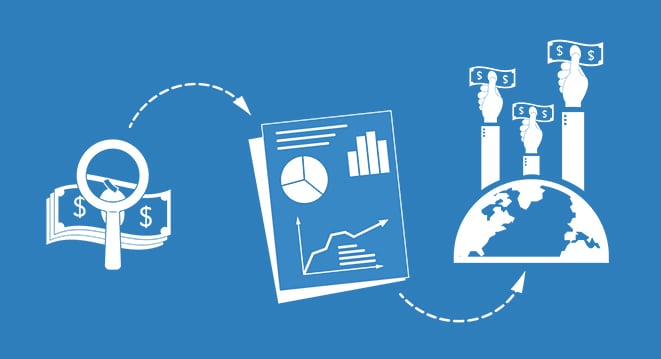Thanks to its low overhead, dropshipping is a popular business model for emerging e-commerce businesses — but it also comes with some serious caveats. Here’s what you need to know.
You’ve seen the ads on Instagram. An online store with a stylish logo is selling watches, sunglasses, cell phone cases, or some other product. To consumers, it looks like a small boutique. However, savvy e-commerce business owners know better; that “small boutique” is actually a dropshipper sourcing products from a much larger warehouse, marking them up, and making a profit.
With the rise of e-commerce, dropshipping has become an increasingly popular business model. Research shows that the dropshipping market was valued at $102.2 billion in 2018 and is only expected to grow. Dropshipping is an attractive method of e-commerce because it does not require a large investment upfront and it leverages social media to create sales. If you’re considering dropshipping but are unsure exactly how it works or whether it will work for you, consider this article your unofficial intro course.
What is dropshipping?
A dropshipping business works by sourcing a product from a supplier that handles manufacturing, packaging, shipping, and returns. The dropshipper is responsible for choosing the products, setting up a website, marketing the business, and handling communication with customers. The supplier handles everything else. Many dropshippers rely on massive online warehouses like AliExpress who supply the products and handle shipping and returns.
Imagine that you want to set up a dropshipping e-commerce business. You decide you would like to sell sunglasses. You select the sunglasses you want to sell via AliExpress, choose your business name and branding, set up a website using Shopify, list products at a marked-up price, create Instagram and Facebook pages for your business, pay for social media ads and wait for the orders to come in. Customers place the order through you, but the supplier handles fulfillment.
Why don’t suppliers just sell their own products? By creating online stores and ads tailored to the specific products they sell, dropshippers perform powerful marketing services that suppliers don’t have time for. The result is a win for both the supplier, who makes money from the product at its wholesale rate, and the dropshipper, who makes money from the marked-up price.
As a dropshipper, you can choose to sell a niche product or a whole range of products. The key is to invest a lot of time and a little bit of money into your branding and marketing. Take the sunglasses example, for instance. You can use gold cursive lettering and a fancy-sounding name to imply a luxury lifestyle brand, or you can telegraph a budget-friendly, family-oriented concept — all using the same product.
Pros of dropshipping
Dropshipping is a popular business model for a reason. The positives are very, very appealing. Because you do not need to maintain an inventory, a warehouse, a retail space, an office, or even a staff, the cost of entry is extremely low. Dropshipping also allows you to be flexible in your product offerings without losing money. Sunglasses not selling? Pivot to handbags, headphones or literally anything else. You also don’t have to deal with packaging, shipping, or ebbs and flows of commerce related to supply and demand. As such, there’s no need to scale your operation for growth. Thanks to the use of large suppliers, this is built-in.
All those advantages add up to a business that can be run cheaply from anywhere in the world. With less than a hundred dollars, you could even start a dropshipping business from your couch.
Cons of dropshipping
Before you start that sunglasses company from your couch, let’s talk cons. Unfortunately, the low startup costs mean that anyone with an internet connection can become a dropshipping entrepreneur. This can result in an oversaturated market where many businesses are selling the exact same product, and several of them are already selling at rock-bottom prices to undercut similar vendors (like you). This results in thin margins, which are worrisome if you invest money into social media ads and influencer marketing.
Other cons include the inability to put your brand on the packaging, lack of control over the supplier’s choice of boxes versus envelopes, and inability to verify the quality of the item on a consistent basis.
Additionally, dealing with multiple suppliers can be tricky and make it hard to calculate shipping charges. Keep a close eye on your shipping profile to avoid inadvertently making your customers think that you don’t ship to their location.
The takeaway
Investing time into choosing your products, designing your website, creating polished social media pages, and delivering great customer service is the only way to make money dropshipping. Remember, even though the product and fulfillment are handled elsewhere, the customer will still hold you responsible for any issues. If the shipment gets lost, they will blame you. On the other hand, if the product arrives on time and is exactly as amazing as advertised, your business will thrive.
Whether you’re starting a dropshipping business or some other online platform, 71lbs can help you save money on shipping by demystifying shipping costs and using an automated platform to help you manage logistics. To learn more about our services contact 71lbs today.



